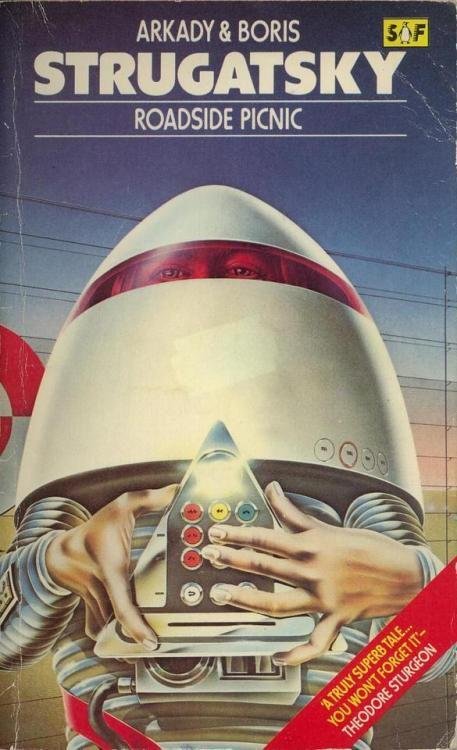The Penguin Science Fiction series produced some of the very best SF book covers.
Alan Aldridge was the chief art director at Penguin from 1965 to 1968 when he left to form INK. He mainly worked on Penguin SF covers during this period, and some are included below. Surreal, cartoonish, vivid, and colorful, sometimes using mixed media, they are always eye-catching, and real works of art in their own right. Aldridge started the tradition of the period of SF covers having mostly black backgrounds. At his company INK, he worked most notably with the Beatles, on their volumn of illustrated lyrics, among other projects.
David Pelham replaced Alan Alridge as the art director at Penguin Fiction in 1968. He hired Franco Grignani to design a slew of SF covers. Grignani was a photographer who used filters and distortion to create surreal images. His art was too advanced for my younger self to appreciate and understand them. Still, I did read his version of “Bill the Galactic Hero” even though I did not appreciate the cover at all. Even now, the covers are only just beginning to grow on me.
NB: There is an excellent discussion of early to middle period Penguin SF book cover art by Josh MacPhee here:
David Pelham remained at Penguin for 11 years, until 1979. He designed and illustrated many covers himself. He had two illustration modes: A particularly severe, sharp-lined airbrush style, or a flat oddly diagrammatic style. Both were used to create cleverly surreal compositions. He is perhaps best known for his work on the early Ballard novels and short story collections, which, because of their acutely surreal end-of-the-world narratives, were a perfect match for Pelham’s visually arresting designs.
Peter Tybus is a somewhat enigmatic artist and illustrator, born in Germany, but working in London, who created a number of distinctive sci-fi book covers. I can find only three for the Penguin stable of sci-fi books. His style fits rather well with David Pelham’s airbrush style, to the point where I had thought the covers below were Pelham’s work. I presume that Pelham commissioned Peter — I wonder what the design briefs asked for. There is a lovely exchange between various people who knew Peter here. A list of some of his other book covers can be found here.
Some of Adrian Chesterman’s sci-fi book covers for Penguin might lead you to think he is something of an edgy illustrator. He certainly has a very clean graphic style and a great sense of composition in the terrific covers below. However, these are not representative of the main body of his work, which is very commercial, very mass-market material, and which is, in some cases, supremely kitch (but very popular).
Peter Lord’s series of covers for John Wyndham’s Penguin-published novels have a bold design, sharp, clean lines set against smooth air-brush gradients, and strikingly vivid colors. The four examples below are the best of this series, in my opinion, with the cover for Chocky being exemplary (in that it catches the fate of the little boy David in the story). However, some of the other covers, for example, The Day of the Triffids (where the triffids seem like a horticultural after-through) and The Midwick Cuckoos (where the golden-eyed children look like members of a youth team) feel a little “knocked off.”
The post of Penguin Art Director is not a position where someone who lacks courage is chosen, or at least I assume it is the Art Director who makes the decisions about cover design. Stanislaw Lem’s novels and short stories have been elevated to the lofty heights of “Modern Classics” in this series of Penguin editions. Still, we all know Lem was a visionary SF writer, who blended deep insight into the future of society, and technology, with, on occasions, biting satire, to create stories that — OK, I admit it — transcend the sometimes rather confining label of “Science Fiction.” These covers are certainly bold and eye-catching, using simple shapes, solid blocks of rather muted colors, and elements of collage, with Fiasco being rather weak (no collage elements that I can see), and The Cyberiad looking a little out of place, being almost all collage. If you know the artist, please let me know, and I will add that info.
























